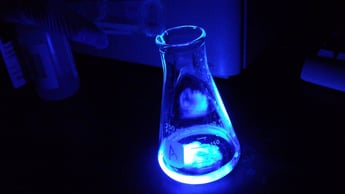 Due to its high sensitivity, wide dynamic range, and high signal-to-noise ratio, enhanced chemiluminescence or ECL is considered as one of the most popular detection methods for a variety of western blotting applications in most protein laboratories around the world. This method also proves to be very useful in the quantification of a wide variety of biological materials such as cells, proteins, RNA, DNA, and a host of other analytes.
Due to its high sensitivity, wide dynamic range, and high signal-to-noise ratio, enhanced chemiluminescence or ECL is considered as one of the most popular detection methods for a variety of western blotting applications in most protein laboratories around the world. This method also proves to be very useful in the quantification of a wide variety of biological materials such as cells, proteins, RNA, DNA, and a host of other analytes.
How Does Enhanced Chemiluminescence Work`?
When using this method in developing Western blots, antibodies are first labeled with horseradish peroxidase (HRP). A chemiluminescent substrate (an organic dye such as luminol or acridan) and a strong oxidizing agent (hydrogen peroxide) are then applied to the blot to form excited intermediates. When these excited intermediates decay to a lower energy level and return to their stable ground state, they release a strong blue emission at 450 nm wavelength. In theory, each molecule of the reactant would release one photon of light.
Basically, the principle of enhanced chemiluminescence can be illustrated by the following equation:

Most commercially available luminol is provided with an enhancer (such as phenol, naphthol, aromatic amine or benzothiazole) that allows the reaction to proceed for several minutes without substantial light output reduction. Light emission typically stabilizes in less than two minutes and can last anywhere from a few seconds to several hours depending on the quantity of the reactants. These emissions can then be captured with an x-ray film and/or detected by a luminescent signal instrument such as a CCD-based imager or a phosphoimager.
Using a CCD-based imager offers a lot of advantages over capturing the emissions with an x-ray film for a number of reasons. For starters, it can provide higher sensitivity, larger dynamic range and greater resolution. It can also provide qualitative analysis and instant image manipulation.
Advantages of the Enhanced Chemiluminescence Method
Aside from the advantages mentioned earlier, enhanced chemiluminescence also produces intense and prolonged light emissions, and low background noise. It does not require any pre-incubation step and substrate can be added several minutes prior to detection. It also shows a linear relationship between the concentration of the measured substance and luminous intensity and produces no background expression of luciferase in mammals.
According to a 1985 report published in the journal Clinical Chemistry, using phenol enhanced luminol preparations increases the light emission more than a thousand fold. The sensitivity of this method is 10,000 times higher than the light absorption method and about 1,000 times higher than the fluorescence detection method. Thus, by using the enhanced chemiluminescent method, you may be able to detect minute quantities of proteins (even down to femtomole quantities).
Controlling the pH is also not a concern when you are using commercial luminol preparations. However, you may need to stabilize the pH (at about 8.5) if you are using a home-brew preparation if you want peroxidase activity and light emission to occur. Luminol-based chemiluminescence is ideal for microplate-based immunoassays and DNA probe assays.
Limitations of the Enhanced Chemiluminescence Method
Despite the many advantages of using this method, there are several factors that limit its efficacy. Here are some of them.
- It produces a dynamic and transient signal. The light emission produced by using this method fades exponentially over time.
- It requires multiple exposures. Multiple exposures are typically required to capture optimal images and prevent signal saturation, especially if you use x-ray films to capture the resulting light emissions. Underexposure usually produces barely visible signals while overexposure can blur the resulting bands and increase the risk of losing the signal in the background.
- The results may be difficult to quantify. This is especially true when film exposure is used.
Image Source: ytmg







